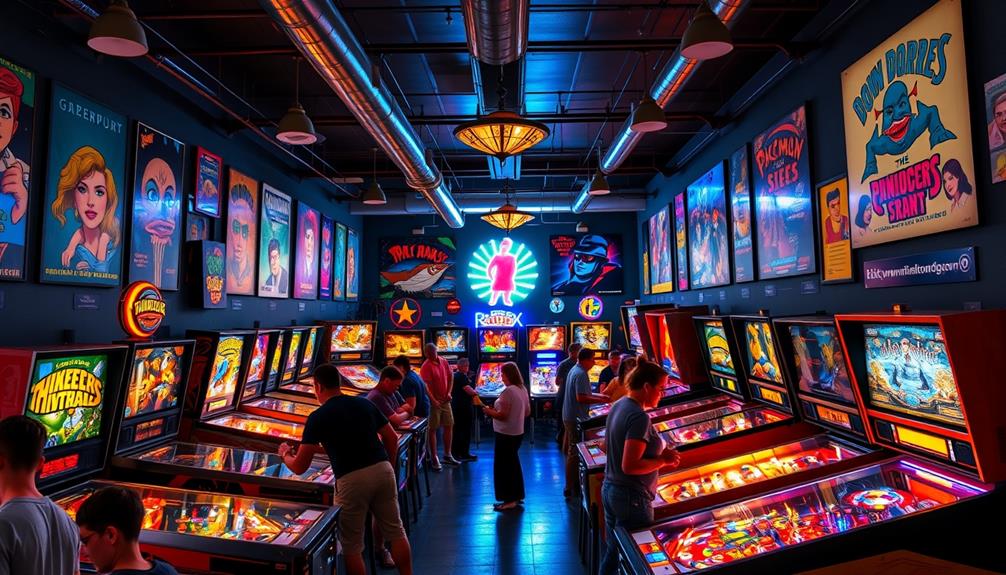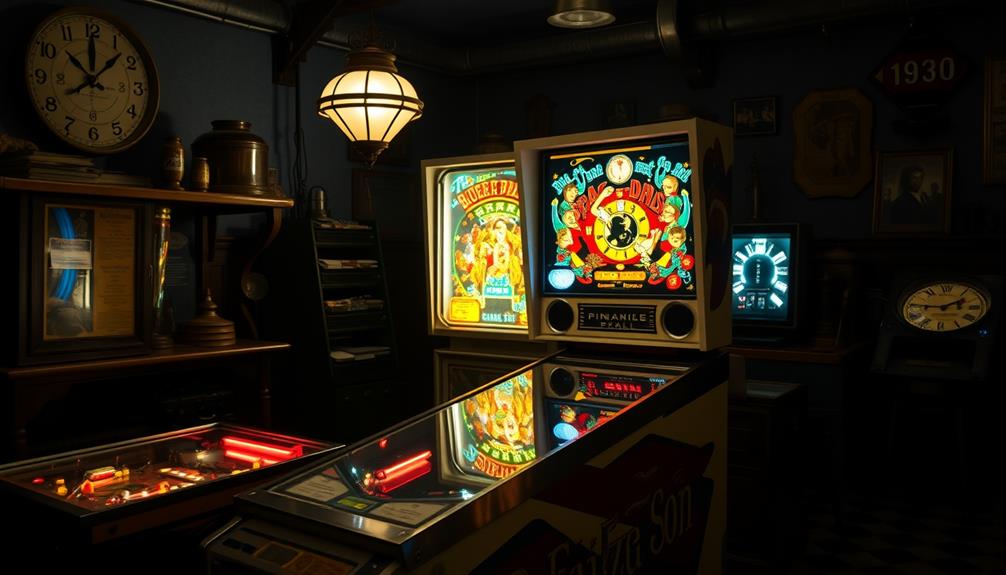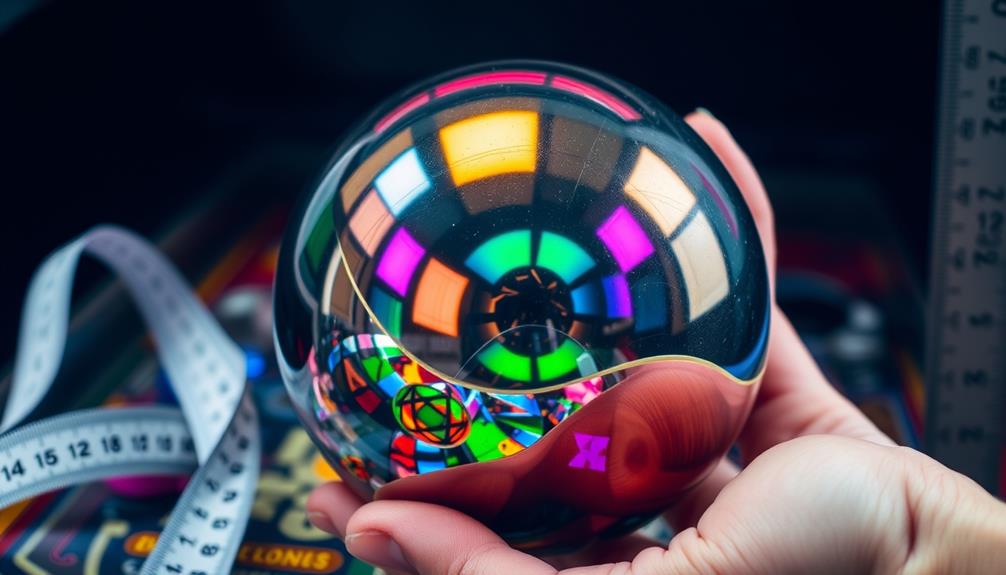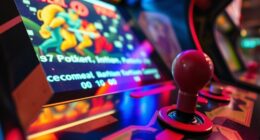Pinball was outlawed in New York City on January 21, 1942 by Mayor Fiorello LaGuardia, who considered it a threat to public morals and associated it with organized crime. This led to the confiscation of over 2,000 machines and public destruction events to demonstrate the government’s determination. The ban remained in place until 1976 when perceptions changed, recognizing pinball as a game of skill. Cities like Chicago and Los Angeles also implemented bans. The journey of pinball is a captivating tale that has shaped its role in popular culture. You may find the details quite intriguing. Many speculate that the primary reason why pinball was prohibited was due to its widespread popularity and the potential loss of revenue from other entertainment options such as movie theaters and arcades. Nevertheless, as public opinion evolved, pinball was eventually legalized and regained its status as a beloved pastime. The prohibition of pinball in New York City and other municipalities, and its subsequent revival, are intriguing chapters in the history of the game.
Key Takeaways
- Pinball was officially banned in New York City on January 21, 1942.
- The ban was enacted due to concerns over organized crime and gambling.
- Over 2,000 pinball machines were confiscated during the crackdown.
- The ban remained in place until it was lifted in 1976.
- Legal changes in the 1970s recognized pinball as a game of skill.
Early Beginnings of Pinball
Pinball has its roots in the 18th century, originating from a French game called bagatelle. In bagatelle, players used a cue to launch balls into various holes on a board, aiming for points based on where the balls landed. By the mid-19th century, this game made its way to the United States, gaining popularity and setting the stage for what would evolve into pinball machines.
The evolution of gameplay in pinball can also be likened to how certain zodiac signs influence personal appeal and attraction in relationships, as both involve a blend of chance and skill in maneuvering complex dynamics. In this situation, understanding astrological compatibility can enhance interpersonal connections, much like mastering pinball strategies can improve one's game.
In 1931, the first true coin-operated pinball machine was introduced, marking a significant shift from bagatelle's simpler gameplay to a more commercialized version. The introduction of the ball shooter in 1871 allowed players to launch balls without cues, enhancing engagement and making the game more accessible. Early pinball machines resembled tabletop versions of bagatelle, primarily relying on chance rather than skill.
However, everything changed in 1947 with the introduction of flippers. These revolutionary devices allowed players to have more control over the game, blending skill with chance and fundamentally altering the history of pinball. This transformation not only made pinball more exciting but also paved the way for the dynamic gameplay we recognize today.
The 1942 Ban in New York

As concerns about organized crime and gambling grew, New York City officially banned pinball machines on January 21, 1942. This decision was influenced by the prevailing views on financial mistakes to avoid, particularly the fear that pinball could lead children into gambling habits.
Mayor Fiorello LaGuardia led the charge against pinball, labeling the machines a serious moral and financial threat to children and the community. This ban stemmed from fears that pinball was a gateway to organized crime, contributing to gambling activities that could harm society.
During this crackdown, over 2,000 pinball machines were confiscated, and the government staged public destruction events to emphasize its commitment to eradicating the game. The ban reflected a broader trend, as many cities across the United States enacted similar prohibitions during the 1940s.
Here are three key points about the 1942 ban in New York City:
- Mayor LaGuardia's Campaign: He viewed pinball as a threat, linking it to gambling and organized crime.
- Mass Confiscation: Thousands of pinball machines were taken out of circulation, demonstrating the city's resolve.
- Long-lasting Impact: The ban remained in place until 1976, when changing views recognized pinball as a game of skill, paving the way for legalization.
Public Perception and Opposition
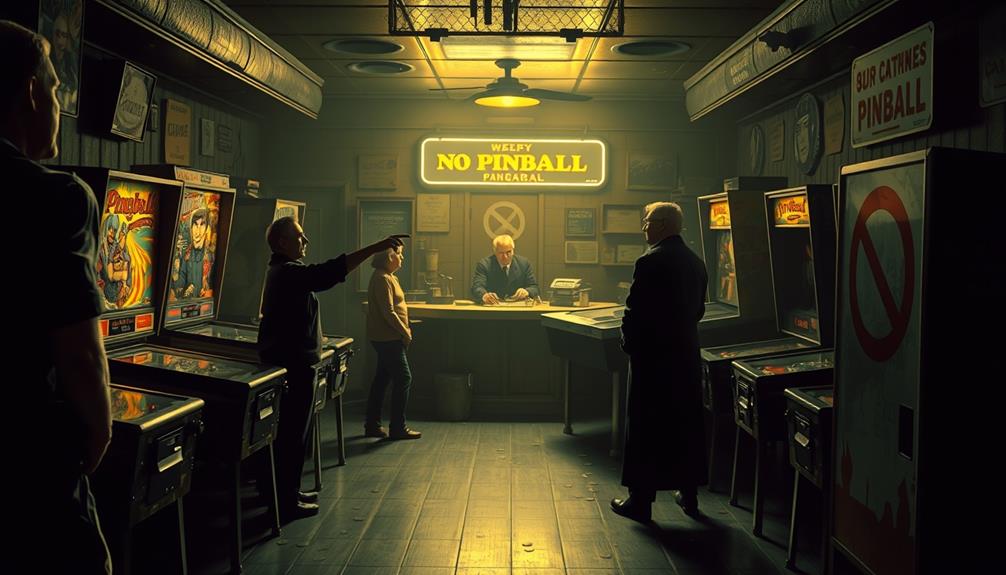
The ban on pinball machines in New York City in 1942 reflected a widespread belief that these games were a moral menace. Mayor Fiorello LaGuardia led the charge, framing the ban as essential for wartime morale and public welfare. His administration's confiscation of over 2,000 machines showcased the growing public sentiment against pinball, which many linked to gambling and organized crime.
During the 1940s, the media sensationalized these connections, portraying pinball as a corrupting influence that fostered juvenile delinquency among the youth. This perception of pinball as a threat to societal values wasn't unlike the cultural beliefs surrounding astrology and attractiveness, where perceived negative traits could affect public opinion.
As you look back, it's clear that the stigma against pinball wasn't just local; cities like Chicago, Los Angeles, and Milwaukee enacted similar bans, echoing the fears of the time. Parents worried that these games led children down a path of vice, while authorities emphasized the need to protect society from the perceived dangers of gambling.
Even after the introduction of flippers in 1947, pinball remained tarnished by its past associations. The public's perception of pinball as a gateway to organized crime and moral decay persisted well into the 1950s, complicating its fight for legitimacy in American culture.
Legal Changes in the 1970s

Throughout the 1970s, attitudes toward pinball underwent a remarkable transformation, leading to significant legal changes that would reshape its future. The decade marked a pivotal shift from viewing pinball as mere gambling to recognizing it as a game of skill.
This change in perception was essential, as it mirrored broader societal shifts regarding leisure activities and community standards, similar to how background checks have evolved to guarantee safety and accountability in various sectors.
- In 1974, the California Supreme Court ruled that pinball was a game of skill, paving the way for its legalization in Los Angeles and influencing other cities to reconsider their bans.
- New York City followed suit, with a dramatic demonstration by Roger Sharpe in April 1976 proving the skill involved in playing pinball. This event was significant in changing perceptions.
- On May 6, 1976, the New York City Council voted to lift the ban on pinball machines, marking a considerable cultural shift.
Pinball's Resurgence and Legacy
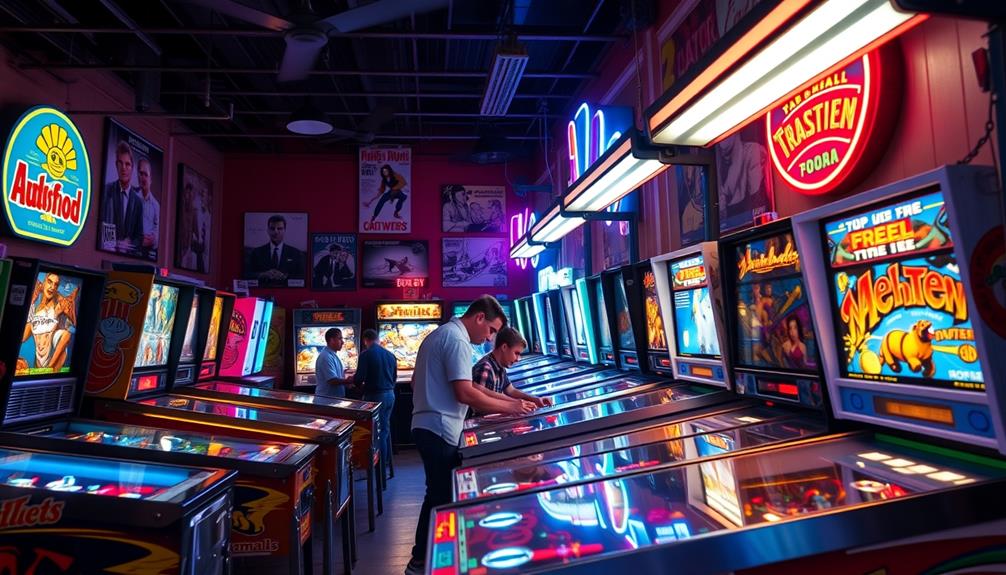
Pinball's resurgence in the late 20th century transformed it from a once-banned activity into a celebrated pastime embraced by a new generation. After being outlawed in many cities, including New York City under Mayor Fiorello LaGuardia in 1942, pinball became an underground activity associated with rebellion and counterculture.
Legalization efforts gained traction in the 1970s, culminating in the 1976 repeal of NYC's ban. This pivotal moment showcased pinball as a game of skill rather than mere luck. The revival of pinball also reflected broader cultural shifts, as communities sought to reconnect and engage in social activities together, reminiscent of the importance of reviving old friendships in modern society.
With the ban lifted, pinball machines saw a revival, leading to the establishment of competitive leagues that now host over 1,800 tournaments annually. The game evolved through its Golden Age, incorporating advanced technology and thematic designs that attracted players of all ages.
This resurgence not only solidified pinball's place in American culture but also highlighted its adaptability as a beloved pastime. Today, pinball stands as a symbol of resilience, reminding us of its journey from a targeted underground activity to a respected and cherished form of entertainment.
Frequently Asked Questions
Why Was There a 35 Year Ban on Pinball?
You might wonder why pinball faced a 35-year ban. It was tied to concerns over gambling and crime, viewed as a threat during tough times, but eventually, public perception shifted, leading to its legalization. As evidence mounted that pinball was not a significant contributor to gambling or crime, the reasons for pinball ban began to lose credibility. In the end, it was recognized that pinball was simply a form of entertainment enjoyed by many, and its legalization sparked a revival in the industry. Today, pinball machines can be found in arcades, bars, and private collections all over the world, a testament to the enduring appeal of this classic game.
Why Did New York Have a Ban on Pinball?
New York banned pinball due to concerns about gambling and its links to organized crime. Mayor LaGuardia believed it exploited vulnerable citizens, especially children, and sought to protect them from perceived moral dangers associated with the game.
Where Is Pinball Still Illegal?
You might find it surprising, but in some places, pinball's still off-limits. Towns like Ocean City, NJ, and Grove City, OH, maintain restrictions, keeping the classic game from gracing their streets.
Who Got Pinball Unbanned?
You should know that Roger Sharpe played a pivotal role in getting pinball unbanned. His demonstration showcased the game as a skill-based activity, shifting perceptions and ultimately convincing New York City's council to overturn the ban.
Conclusion
As you step back from the vibrant lights and clinking sounds of the pinball machine, you can almost feel the weight of history lifting. Once banned and shunned, this beloved game has rolled back into the hearts of many, like a silver ball finding its way through obstacles. It's a reminder that joy can triumph over restriction, weaving a legacy that sparks laughter and nostalgia, inviting you to embrace the playful spirit that pinball embodies.

